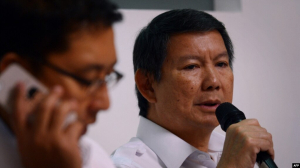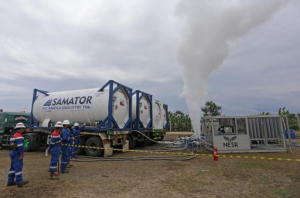Indonesia’s mining royalty hike seen as opportunity to accelerate energy transition
Experts urge the government to channel the increased state revenues, which are expected following the enactment of Government Regulations No. 18/2025 and No. 19/2025 on increasing mineral and coal royalties, towards a just and sustainable energy transition.
Al Ayubi, Policy Strategist at energy think tank CERAH, emphasized that the new royalty scheme must go beyond simply boosting government revenue.
“This increase should be viewed as a strategic step to reform extractive industry governance an accelerate the energy transition. The funds must be clearly earmarked for renewable energy development, including subsidies and green investment incentives,” he said in a statement on Friday, May 9, 2025.
Under the new policy, a progressive royalty system is introduced for key minerals such as nickel, with rates rising from a flat 10 percent to a range between 14 percent and 19 percent, depending on the benchmark mineral price. Meanwhile, coal royalties have been adjusted based on licensing types − royalties for Mining Business Permits (IUP) have been increased, whereas rates for Coal Contract of Work (PKP2B) and Special Mining Business Permits (IUPK) have been lowered.
Indonesia’s 2020–2024 National Medium-Term Development Plan (RPJMN) allocates approximately Rp34.2 trillion (about US$2 billion) annually for renewable energy − far below the estimated annual need of Rp148.3 trillion. This funding gap hinders the country’s ability to meet its national energy mix and emission reduction targets under its Nationally Determined Contributions (NDC).
A report by the Institute for Essential Services Reform (IESR) shows that from 2019 to 2021, fossil fuel investments dominated at 73.4 percent, while renewables only received 26.6 percent of total private energy investment.
“This funding imbalance is a major barrier to the energy transition. That’s why the additional royalties must be urgently redirected to bridge the renewable energy financing gap,” Ayubi added.
Tata Mustasya, Executive Director of environmental group Sustain, viewed the coal royalty hike as a strategic opportunity for President Prabowo’s administration to address the climate crisis. He outlined three core objectives of the policy: to significantly increase fiscal capacity for energy transition, to disincentivize coal production, and to establish a fairer system by taxing windfall profits from the coal industry.
Mustasya further argued that royalty rates should continue to rise gradually to achieve these goals. With current coal price trends between 2022 and 2024, the government could gain between US$5.63 billion (Rp84.55 trillion) and US$23.58 billion (Rp353.7 trillion) annually − enough to fund the country’s US$96.1 billion Just Energy Transition Partnership (JETP) through 2030.
Aryanto Nugroho, National Coordinator of Publish What You Pay (PWYP) Indonesia, warned against short-termism and stressed the need for a strategic royalty policy that curtails coal dependence. He pointed to the current RPJMN 2025–2029, which still allows for 700 million tons of coal production annually − far above the National Energy Plan (RUEN) safe limit of 400 million tons.
Nugroho also criticized ongoing support for uneconomical and environmentally harmful coal downstream projects such as coal-to-DME conversion. “Royalty increases must lead to improved governance and truly benefit impacted communities. The funds should not be funneled into flawed coal downstreaming ventures,” he asserted.
Tag
Already have an account? Sign In
-
Start reading
Freemium
-
Monthly Subscription
20% OFF$29.75
$37.19/MonthCancel anytime
This offer is open to all new subscribers!
Subscribe now -
Yearly Subscription
33% OFF$228.13
$340.5/YearCancel anytime
This offer is open to all new subscribers!
Subscribe now







